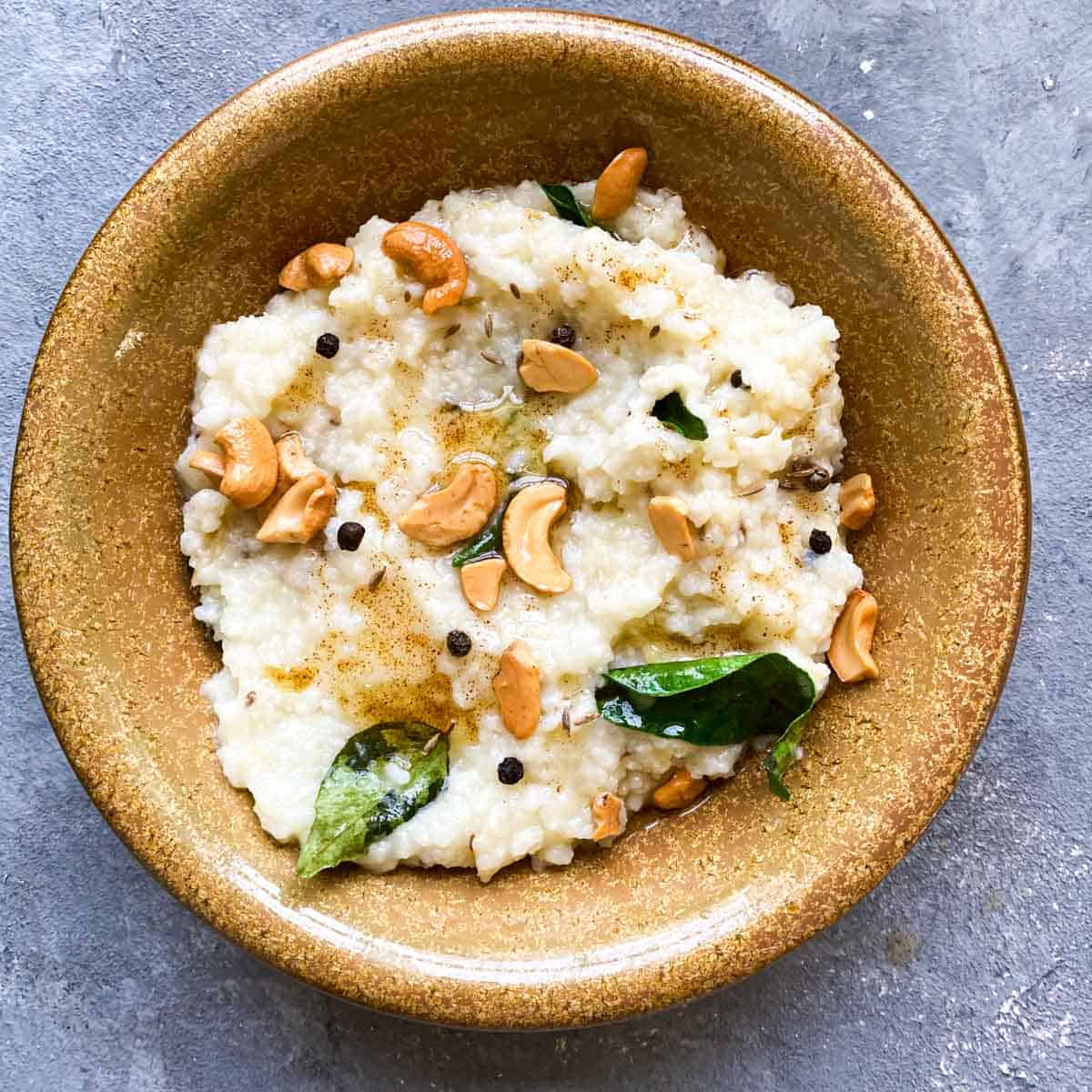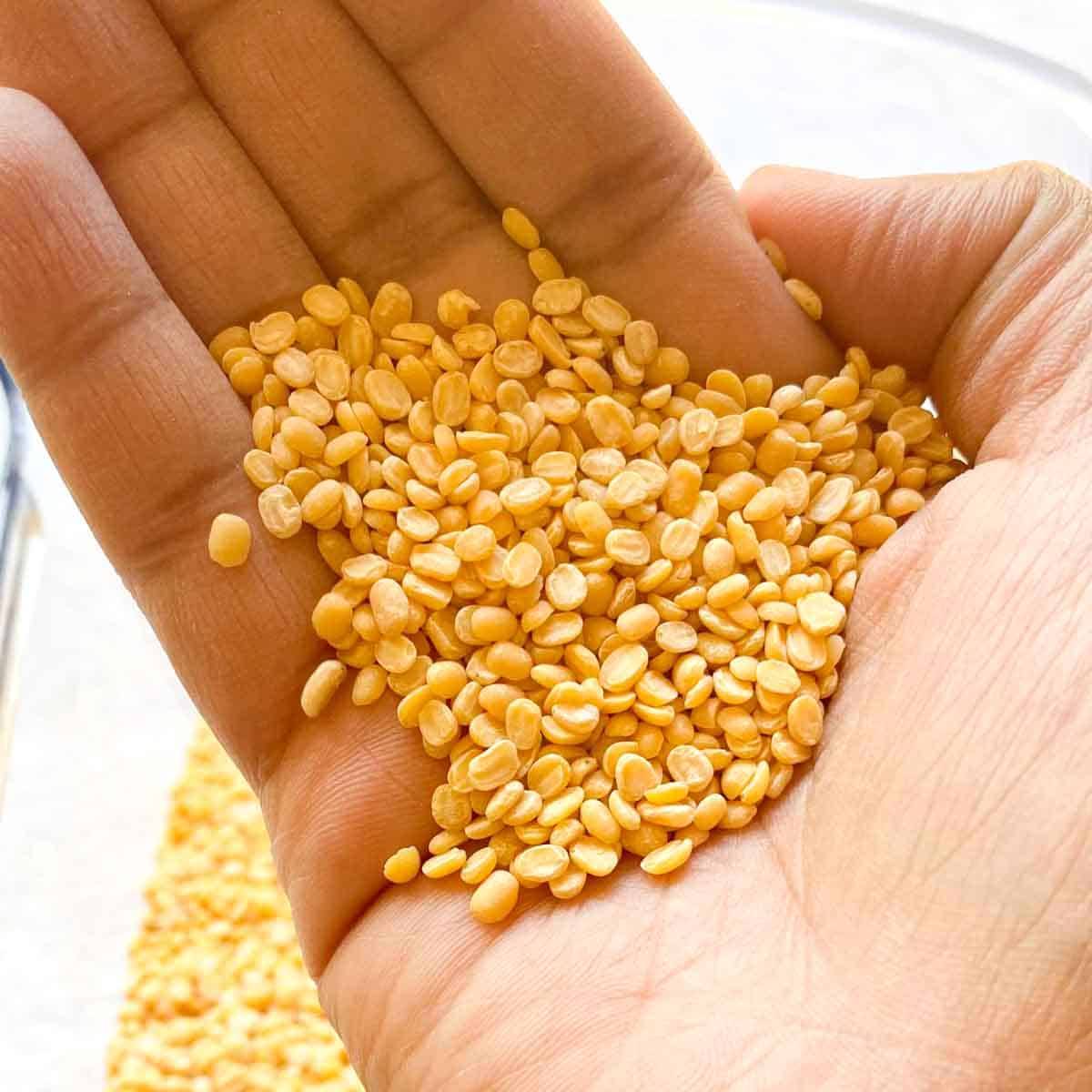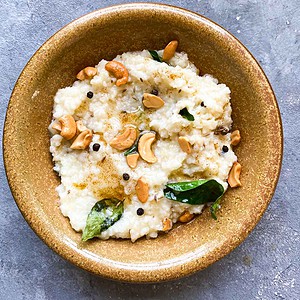Techniques for an easy and delicious pongal
Wash rice and dal in running water until water runs clear - Washing rice and dal removes surface-level chemicals, residues, and starches from the rice and dal and ensures that both the rice and dal cook evenly, resulting in a cleaner tasting pongal. Whisk rice and dal for a creamy dal - Once the rice and dal have finished their cook time, it is important to whisk the dal with any of the remaining water left in the pot. The process of whisking the dal and rice helps emulsify the fats and starches in the pongal and breaks up the rice and dal pieces to create a creamy and homogenized mixture. Use instant pot or pressure cooker for faster cook times - With the instant pot, you can simply add your pongal ingredients to the pot and set it and forget it until you are ready to eat. The added pressure in the instant pot helps break down the rice and dal quickly compared to the stovetop method. Using moong dal helps pongal come together easily - Moong dal is the perfect dal for making a quick pongal. This lentil variety is thin, so it doesn’t require soaking and cooks within minutes, which makes it especially ideal if you are making pongal on the stovetop. Read this article if you are interested learning about the other dal varieties in Indian cooking. Use short grain rice for a creamier dal - Short grain rice tends to be plumper and require less water to meld into a porridge. However, if you only have a rice variety like basmati on hand, go ahead and use it - just note that it might require a bit more water.
What type of rice to use for pongal?
There is much debate on what type of rice should be used for pongal. Traditionally short grain rice that is freshly cultivated in a given year’s harvest is used for ven pongal. Typically in India, varieties that are used in India are sona masuri or ponni rice. Short grain rice in general requires less water and is easier to whisk into a porridge consistency. Long grain rice, in contrast, tends to stay separated. However, most households in the United States don’t tend to have these speciality Indian rice brands. The first option is to purchase a short grain rice for your pongal. Can you use a long grain rice like basmati for pongal? The short answer is yes. Long grain varieties of rice will just require a bit more water for the rice and dal to meld. You can still use the recipe below, but if the basmati rice still holds its shape, simply add a bit more water. Once the dal and rice are soft, whisk until the rice gets to a porridge consistency.
Consistency of a great pongal
The consistency of a great pongal is highly opinionated topic. So I’ll talk about MY ideal consistency for pongal…
Lentils and rice should meld together and not hold their shape Pongal should be creamy and thick like mashed potatoes Pongal shouldn’t be watery - If it is, just keep cooking it on the stove until some of the water evaporates. Pongal should be shiny with ghee - The best pongal is decadent and uses ghee liberally. I know a good pongal when I can see it glistening with ghee. Another indicator is that when you touch the pongal it shouldn’t stick to your hands. Pongal shouldn’t be lumpy - I hate a lumpy pongal that is dry. This is often a problem with pongal when you reheat it. The cure for lumpy pongal is to add some water, heat, and mix the pongal to help loosen it.
What type of dal to use for pongal?
There are many Indian dals that you can use for pongal. The two main dals used for pongal are toor dal and moong dal. I prefer moong dal to make pongal because it is a thinner variety that cooks really quickly. This enables me to make a dal in the instant pot or on the stovetop without soaking beforehand. You can alternatively use masoor dal, also called red lentils, which is equally thin.
Ratio of Rice:Dal in Pongal
I use a 2:1 ratio of rice to dal in my pongal. This creates a decadent and creamy pongal that is reminiscent of a luxurious savory porridge or mashed potatoes. However, if you are looking to increase your protein intake, you can use a 1:1 ratio of rice to dal. Just note that as you increase the ratio of dal to rice you are going to get a drier final consistency. If you add extra dal to the pongal, add extra water, as dal requires much more water to cook. The rule of thumb is that if you add ¼ cup more dal, add double the amount of water. So in this example it would be ½ cup more of water.
Pongal vs. Khichidi
Pongal and khichidi are in the same family of food. They are both porridges made with lentils and rice. Pongal is a dish that is from Tamil Nadu. It is flavored with ginger, curry leaves, cumin, and black peppercorn. Khichidi on the other hand is a broader category of rice and lentil porridge that is eaten in the North. It has many more varieties due to the broader possible range of spices and vegetables in it.
Instant Pot for Pongal
Using an instant pot for pongal is my preferred way of making the dish. I love it because you can simply add all the ingredients to the pot and leave until the cook time is complete. It’s also great because the added pressure helps cook the lentils and rice together quickly. Last, I hate to admit it, but the pressure cooker still intimidates me, so the instant pot is my alternative whenever I need that high pressure without the stress.
Pongal without pressure cooker or instant pot
If you are a beginner cooker and don’t have a kitchen with an instant pot or pressure cooker - fret not. You can still make pongal on the stovetop. In fact this is a very traditional method of making it. The key to making pongal on the stovetop is to get a deep pot to make the pongal. The deep pot ensures that the water doesn’t overflow. To cook the pongal on stovetop, just add all the ingredients to the deep pot with a lid. Turn the stove to medium-high heat or until the water comes to a boil. Reduce the heat to medium and close the the pot with a lid on for 15-20 mins. With this method you will have to check on the stovetop pongal periodically, to turn down the heat if the water starts to boil too vigorously. In addition, add water if it runs out before the dal and rice and cooked.
Related Posts You’ll Love
Pongal Harvest Festival Pongal Festival Menu Inspiration Pumpkin Sambar with Moong Dal Lemon Rice Thayir Sadam (Yogurt Rice)




